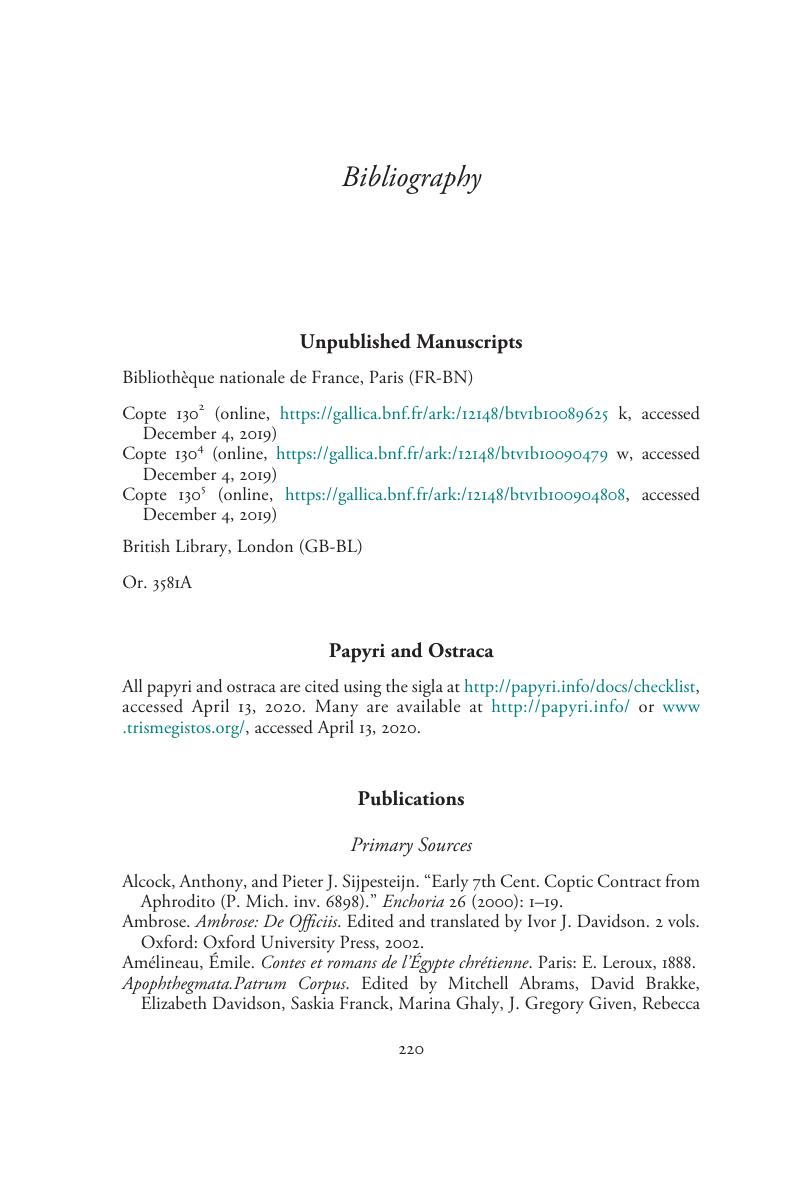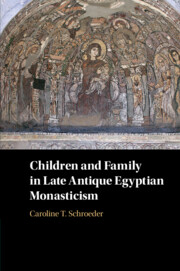Book contents
- Children and Family in Late Antique Egyptian Monasticism
- Children and Family in Late Antique Egyptian Monasticism
- Copyright page
- Dedication
- Contents
- Figures
- Acknowledgments
- Abbreviations
- Introduction
- Part I Finding Children
- Part II Representations
- Part III A Social History
- Bibliography
- Index of Ancient Sources
- Index of Names and Subjects
- References
Bibliography
Published online by Cambridge University Press: 18 September 2020
- Children and Family in Late Antique Egyptian Monasticism
- Children and Family in Late Antique Egyptian Monasticism
- Copyright page
- Dedication
- Contents
- Figures
- Acknowledgments
- Abbreviations
- Introduction
- Part I Finding Children
- Part II Representations
- Part III A Social History
- Bibliography
- Index of Ancient Sources
- Index of Names and Subjects
- References
Summary

- Type
- Chapter
- Information
- Children and Family in Late Antique Egyptian Monasticism , pp. 220 - 246Publisher: Cambridge University PressPrint publication year: 2020

